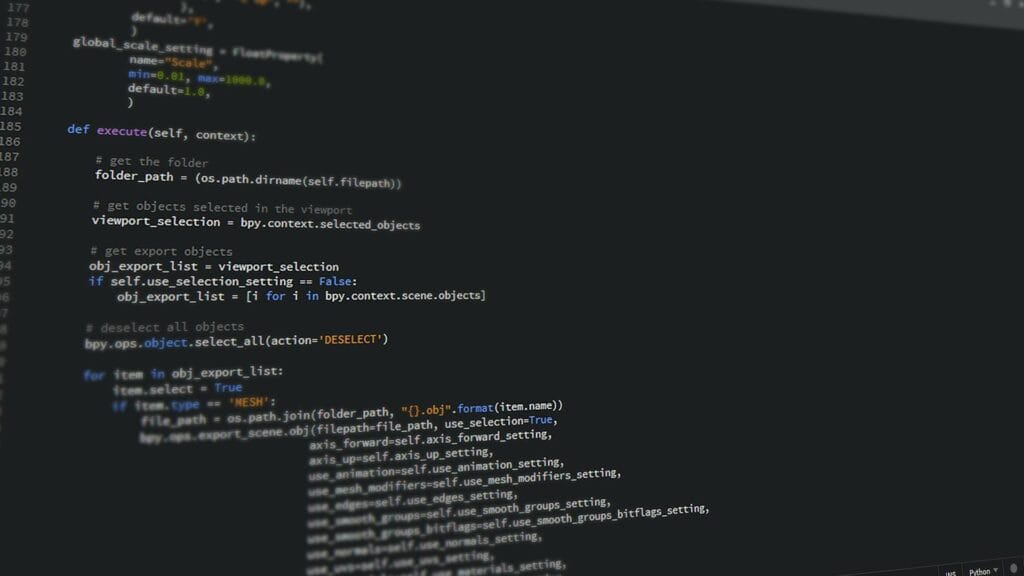Introduction
Python is, literally speaking, the default choice of language when it comes to implementing artificial intelligence. It is readable and simple and has a profoundly expansive library ecosystem, making it extremely favorable when building intelligent applications. This book will cover the basics of AI and see how to implement it by making use of Python.
Simply put, artificial intelligence is the simulation of human intelligence in machines. It can be referred to as creating systems that could perform tasks requiring human intelligence such as learning, reasoning, problem-solving, and perception. AI comprises subfields like machine learning, deep learning, natural language processing, computer vision, and robotics.
Machine Learning with Python
Machine learning is a subset of AI where machines learn from data and improve their performance over time without being explicitly programmed. The richness of the ecosystem of Python libraries in machine learning is associated with the following libraries:

Scikit-learn: This library supports most of the algorithms related to ML like classification, regression, clustering, and dimensionality reduction.
TensorFlow: It is one of the most powerful open-source development platforms initially designed by Google for deep learning, machine learning, and natural language processing.
PyTorch: This is a very flexible deep-learning framework. This one has ease of use and dynamism in approach.
Key Concepts Of Machine Learning
Supervised Learning: This is simply a type of model training that uses labeled data to predict results from unseen new data.
Unsupervised Learning: This is the training of a model without labels, hence identifying patterns or structures from the given data.
Reinforcement Learning: This is the training of a model in an environment to make decisions to achieve maximum awards.
Example: Simple example of Linear Regression
Let’s use a simple example of linear regression with Scikit-learn to predict house prices based on their size.
Python
import pandas as pd
from sklearn.model_selection import train_test_split
from sklearn.linear_model import LinearRegression
###Load the data
data = pd.read_csv(‘house_price_data.csv’)
###Split the data into features and target variable
X = data[[‘size’]]
y = data[‘price’]
###Split the data into training and testing sets
X_train, X_test, y_train, y_test = train_test_split(X, y, test_size=0.2)
###Create and train the linear regression model
model = LinearRegression()
model.fit(X_train, y_train)
###Make predictions on the testing set
y_pred = model.predict(X_test)
Deep Learning with Python
Deep learning is a subdomain of machine learning that uses artificial neural networks, which have more than one layer to model data that has complex patterns. It is also possible to build and train deep learning models using powerful libraries like TensorFlow and PyTorch with the support of Python.

Key Concepts in Deep Learning
Neural Networks: It refers to a model of computation that simulates the brain; the elements representing interconnected nodes are called neurons.
Backpropagation: the method to train a network by adjusting the weights of the links. ConvNets: applied to image and video detection applications. RNNs: applied to sequences of words and time-series data. Example: Image Classification using CNN |
Let’s classify images with a pre-trained CNN model from TensorFlow’s Keras API:
Python
from tensorflow.keras.applications import VGG16
from tensorflow.keras.preprocessing import image
from tensorflow.keras.applications.vgg16 import preprocess_input, decode_predictions
###Load the pre-trained VGG16 model
model = VGG16(weights=’imagenet’, include_top=True)
###Load an image and preprocess it
img_path = ‘cat.jpg’
img = image.load_img(img_path, target_size=(224, 224))
x = image.img_to_array(img)
x = np.expand_dims(x, axis=0)
x = preprocess_input(x)
###Make predictions
preds = model.predict(x)
decoded_preds = decode_predictions(preds, top=3)[0]
Natural Language Processing with Python
NLP is an interaction of computers and human (natural) languages. Libraries available in Python for NLP applications include NLTK, spaCy, and Gensim.

Important Concepts in NLP
Tokenization: It breaks the text into smaller words or tokens.
Stemming and Lemmatization: It is a reduction of words into their root form.
Part-of-Speech Tagging: Identify the grammatical category for words.
Named Entity Recognition: This identifies named entities like person, organizations, or locations.
Example: Sentiment Analysis
Using NLTK to find sentiment in a text.
Python
import nltk
from nltk.sentiment.vader import SentimentIntensityAnalyzer
###Initialize the sentiment analyzer
sid = SentimentIntensityAnalyzer()
###Analyze the sentiment of a text
text = “This is a great product!”
sentiment = sid.polarity_scores(text)
Computer Vision with Python
Computer vision is training computers to understand and interpret visual information. The other cool library in Python is OpenCV for various computing vision tasks.

Important Topics in Computer Vision
Image Processing: Image manipulation and analysis. Object Detection: Locate or detect objects in an image. Image Segmentation: Breaking up an image into various regions.
Example: Object Detection
OpenCV: Object Detection
OpenCV for detecting objects in an image
Python
import cv2
Load the image
img = cv2.imread(‘image.jpg’)
Load the pre-trained Haar Cascade classifier
face_cascade = cv2.CascadeClassifier(‘haarcascade_frontalface_default.xml’)
Detect faces in the image
faces = face_cascade.detectMultiScale(img, scaleFactor=1.3, minNeighbors=5)
Draw rectangles around the detected faces
for (x, y, w, h) in faces:
cv2.rectangle(img, (x, y), (x+w, y+h), (255, 0, 0), 2)
Conclusion
Python’s versatility, readability, and extensive ecosystem of libraries make it an ideal language for AI development. By understanding the fundamental concepts of AI and leveraging the power of Python, you can build intelligent applications that solve real-world problems.


YXlHvA UXxBEvVO uLmlyBph TBR iCzOy